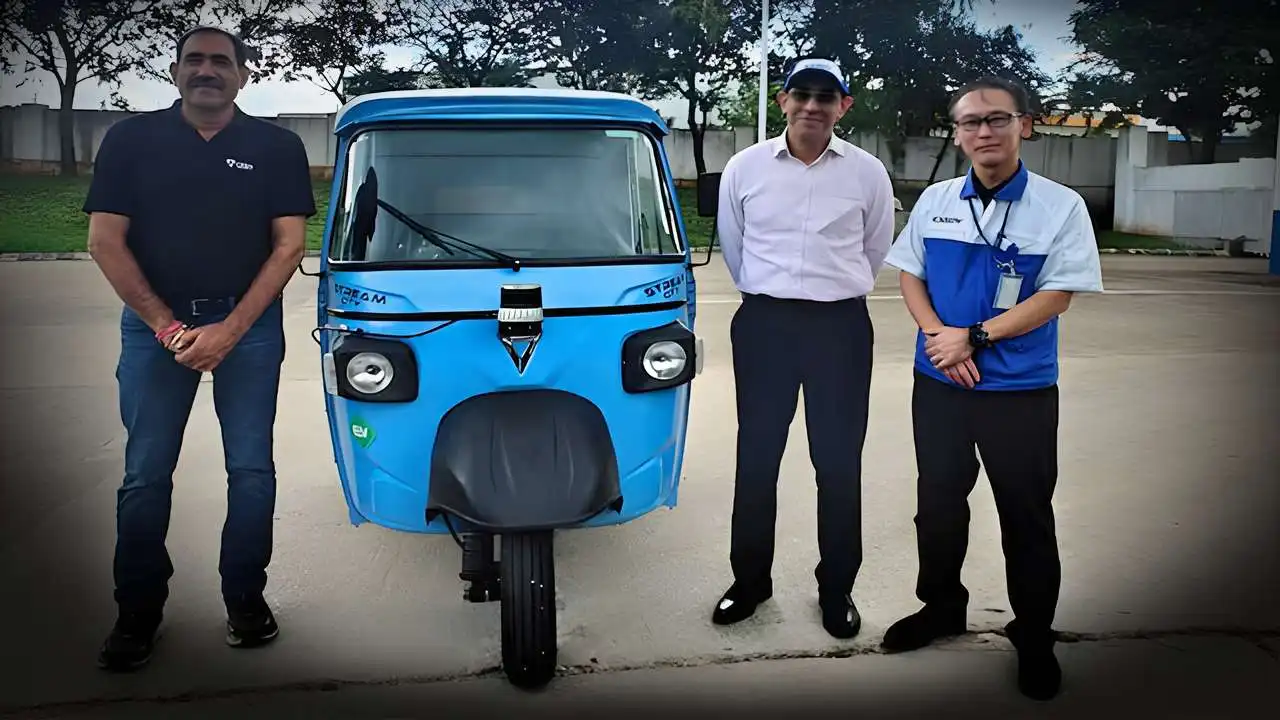India has taken a bold leap into the future of transportation with the launch of Swayamgati, the country’s first self-driving electric auto rickshaw. Developed by Omega Seiki Mobility (OSM), this innovative vehicle combines cutting-edge technology with eco-friendly design, marking a new era in urban mobility. Swayamgati is designed for short-distance travel in controlled environments such as airports, smart campuses, industrial hubs, and other semi-closed areas. Unlike conventional autos, it operates completely autonomously, relying on advanced sensors and artificial intelligence to navigate safely and efficiently.
How Swayamgati Works
Swayamgati is powered by a 10.3 kWh battery, offering a travel range of up to 120 kilometers on a single charge. Its autonomous system is equipped with lidar sensors, GPS navigation, AI-based obstacle detection, multi-sensor fusion, and remote safety controls. These features allow the vehicle to detect obstacles, follow pre-mapped routes, and make real-time decisions without human intervention. The lidar system can identify objects up to six meters away, while the GPS ensures precise route tracking. AI-driven obstacle detection enables the auto to respond dynamically to moving objects or unexpected changes in its environment. Multi-sensor fusion combines data from all onboard sensors, ensuring smooth and accurate navigation. In case of emergencies, operators can remotely take control, ensuring passenger safety at all times.
Pricing and Availability
Swayamgati is available in both passenger and cargo versions. The passenger variant is priced at ₹4 lakh, while the cargo model is slightly higher at ₹4.15 lakh. Bookings have already opened, and OSM has announced plans to produce 1,500 units over the next two years to meet expected demand. This pricing strategy makes the autonomous auto accessible for both commercial operators and businesses looking to adopt sustainable transport solutions. The launch is expected to boost urban mobility options and reduce dependency on human drivers, while also promoting the adoption of electric vehicles across India.
Significance of the Launch
The introduction of Swayamgati marks a significant milestone in India’s journey toward smart and sustainable cities. By eliminating the need for a driver, the vehicle reduces human error and lowers operational costs. Its electric powertrain helps curb emissions, contributing to cleaner urban environments. Beyond environmental benefits, Swayamgati showcases India’s growing capabilities in autonomous vehicle technology. The successful development and deployment of such a vehicle demonstrate the country’s potential to compete with global players in innovation and manufacturing. Furthermore, it opens doors for future applications of driverless vehicles in public transport, cargo delivery, and other commercial use cases.
The Road Ahead
With Phase 1 trials successfully completed, Swayamgati is now moving toward Phase 2, which will focus on controlled commercial operations. Industry experts believe that widespread adoption of autonomous vehicles like Swayamgati could transform urban transportation in India. Cities can benefit from safer, more efficient, and eco-friendly transit solutions. As technological advancements continue, vehicles like Swayamgati are likely to become a common feature on Indian roads, signaling a shift toward intelligent and sustainable urban mobility. The launch of Swayamgati is not just about a new vehicle; it represents a vision of the future, where transportation is safer, cleaner, and smarter for everyone.
Swayamgati sets a new benchmark in urban mobility, combining innovation, safety, and sustainability. With India now entering the era of autonomous electric vehicles, the future of transportation looks brighter and smarter than ever before.
